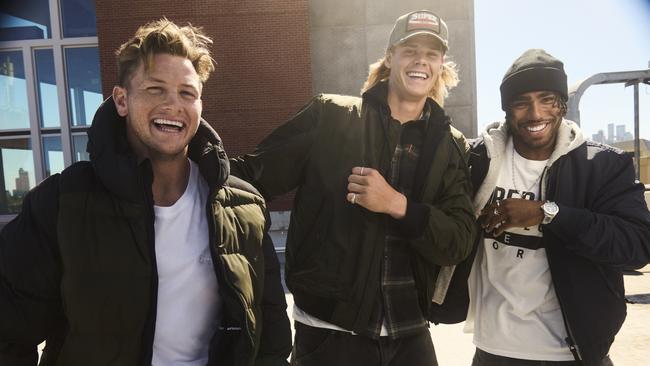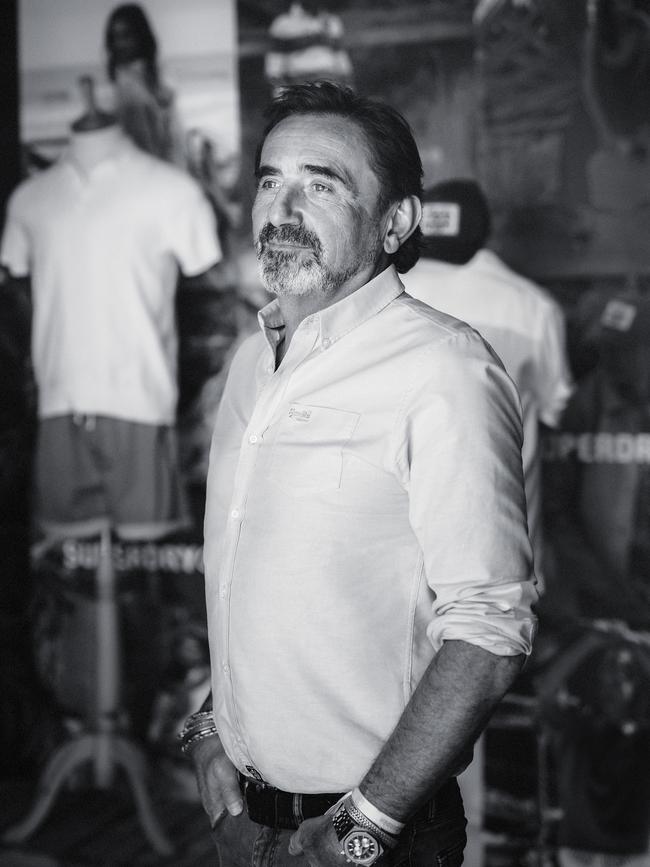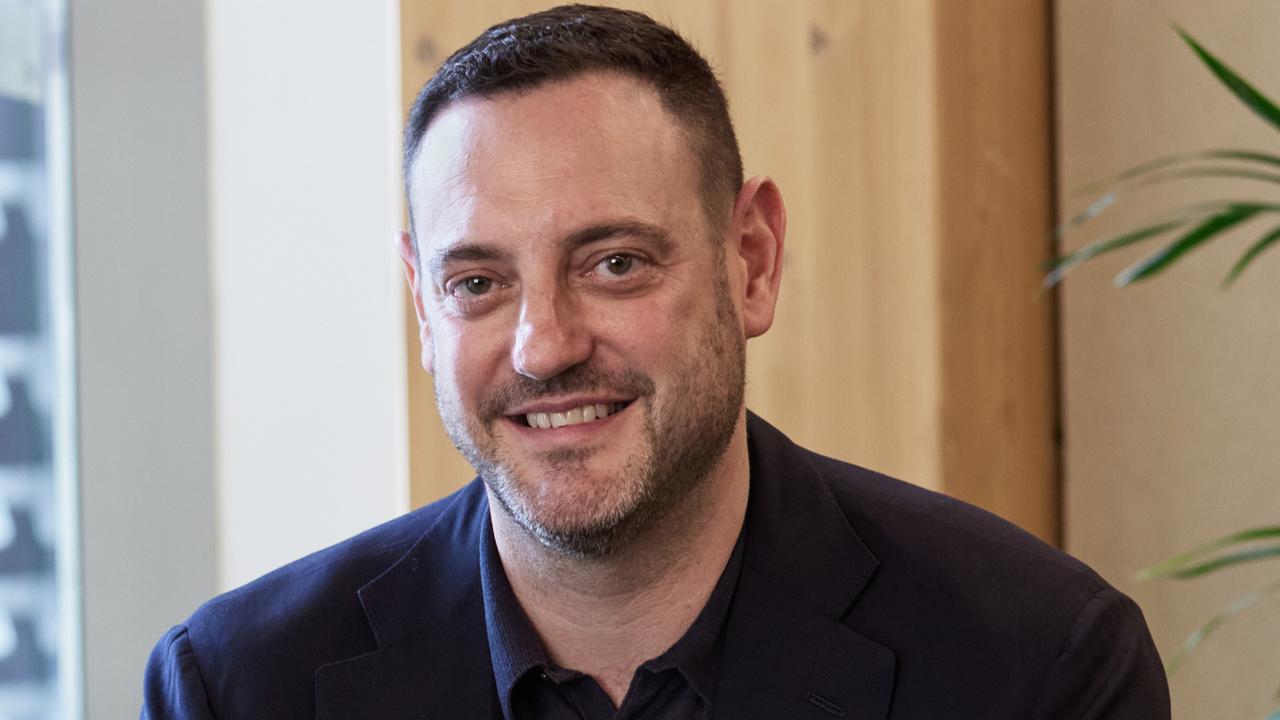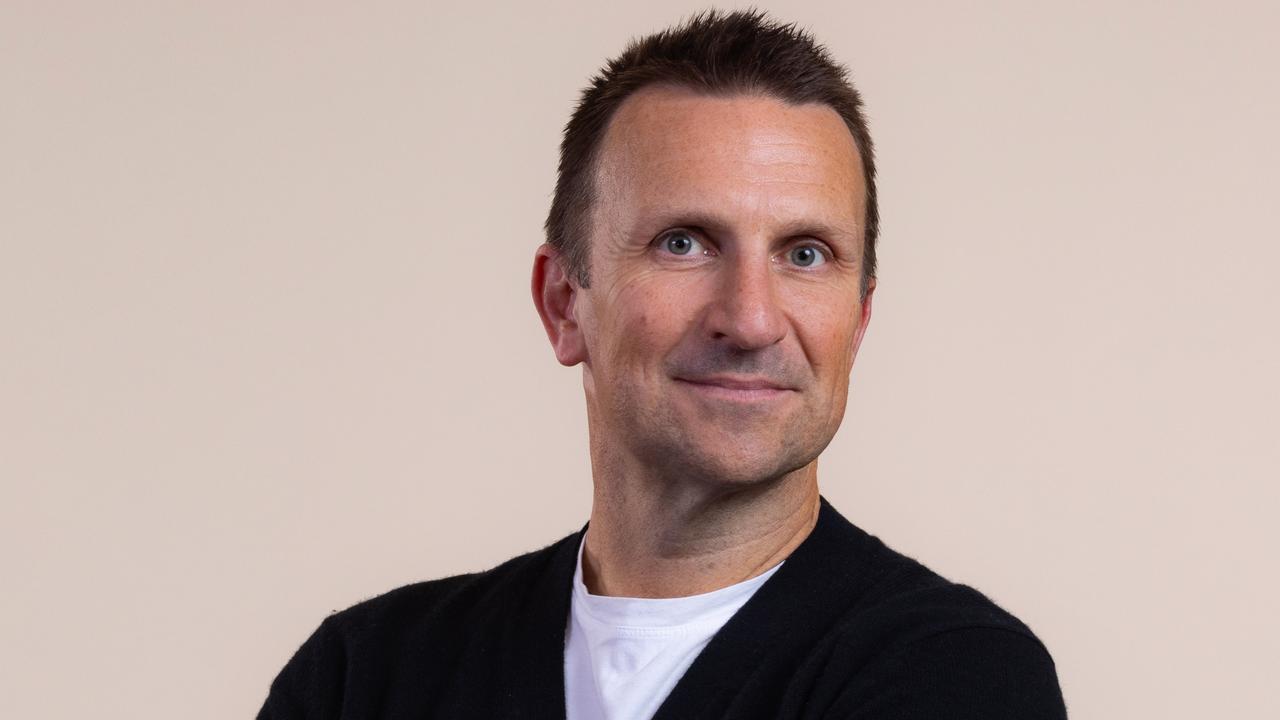Iconic fashion brand Superdry styles global revival
Nostalgia for the 90s and noughties is fuelling a fashion revival and iconic clothing brand Superdry is riding the wave with a plan to double its sales in Australia to more than $100m.

Iconic noughties brand Superdry has launched its comeback with plans to double its Australian business to reach $100m within five years as it reclaims its position as a cult fashion brand for young people.
The British clothing brand, which at its height made $3bn a year and attracted fans such as David Beckham and Lewis Hamilton, is mounting a global resurrection led by original co-founder Julian Dunkerton.
Mr Dunkerton, who co-founded the brand in 2003, launched a major restructure last year, which included delisting from the London Stock Exchange and ploughing his own money into the business, to avoid going into administration.
“We’ve gone on a bit of a journey as a brand, to be honest,” said Mr Dunkerton. “We had such enormous success, it was a global phenomenon, and then I stepped aside and left the business, and it took a different direction. It became a much bigger range for all things and for all people, and that’s very tough to do.”

While Mr Dunkerton stepped down as CEO in 2016, he returned in 2019 in a boardroom coup after a slump in sales and profits for the business. On his return he vowed to reinvigorate the brand as a sustainable fashion brand and central to this strategy was to realign the brand’s positioning.
“Now we are very clear about who and what we are. Superdry is a preppy brand and we’re redefining that for now, from button-down shirts, washback prints, and really beautiful tweed tailoring.”
Superdry’s resurgence is also benefiting from the rise of nostalgia in popular culture and the 90s fashion revival, both of which are coinciding with tough macro-economic conditions which are popularising vintage and second-hand shopping trends.
All of this plays perfectly into Superdry’s two key audiences: its original millennial customers and the current generation of 16-20-year-olds.
“Our original age group of 18 year olds – and the current ones – are coming back into the brand, which is great. I would say we missed a generation in a way,” Mr Dunkerton said. “We tried to tackle the generation above them and they kind of rejected us a bit. But now the next generation coming through are really embracing us again.
“We’ve really defined who our customer is and why they’re going to shop with us. We were floundering a few years ago, chasing a demographic that probably just wasn’t that interested in what we had to say, but now we are clear. We know who we’re going for, and this generation and the original customer base is still incredibly loyal to us.”
While the brand’s strongest market is Europe, Australia continues to be significant for the brand. In line with this, Superdry has signed a 12-year extension deal with Brand Collective to continue to manage all elements of the brand’s presence in the Australian & New Zealand markets. Brand Collective has managed the brand for 25 years in the local market.
Mr Dunkerton predicts the brand’s Australian sales will double in size over the next five years to reach $100m. “We’ve really turned the thing around now, and it’s a very positive view of the next four years, “ he said.
Brand Collective’s general manager of licensed brands Alastair Davies said the business planned to continue to grow locally. “Superdry has carved out a great niche in Australia for international branded products at fantastic value,” he said.
“That’s something we’ve worked very hard to achieve and we want to continue, particularly in the current economic climate when we know that discretionary spending is under pressure. We’ve built out a very strong business, and we are planning for growth.”
To drive that growth, Superdry is launching a campaign to promote its puffer jackets and winter range. Mr Davies said the campaign aimed to highlight some of the brand’s core strengths in the local market, including its dominance in jackets and outerwear and its longstanding association with sports in Australia.
“One of Superdry’s real strengths is in its jackets,” said Mr Davies. “We do winter very well and a core part of Australian culture is sport and watching sport. Whether that’s watching your kids on a Saturday morning or going to the MCG or AAMI Park and we’ve been very involved in sports throughout our history as a brand, both locally and globally.”
The new campaign features AFL players Isaac Quaynor of Collingwood and Tom De Koning of Carlton, along with the NRL’s Harry Grant from the Storm. It will run across digital and social media platforms in addition to in-store activations.
The campaign builds on previous work by the brand which featured soccer and football stars, and aims to tap into younger consumers.
“Linking our brand to young athletes that are at the tip of the spear, from a performance level loop and linking it back into something that is culturally so important to the Australian community, makes a lot of sense,” Mr Davies said. “It allows us to have those conversations with these athletes and communicate that to a broad consumer, which is exciting and keeps us relevant in sport.”
Superdry is part of a growing movement of iconic 90s and noughties fashion brands hoping to make a comeback. The once iconic British fashion brand Topshop has launched a major revival following its sale to new owners, Jack & Jones, meanwhile global denim brand G Star Raw, another huge 90s brand, has announced its return to the Australian market after a four-year absence.
The resurgence of these brands is a significant contrast to the explosion of fast-fashion brands such as Shein, Temu and Amazon, which have flooded the market in recent years.
To counter the flood of fast fashion, Superdry is leaning into sustainability and ethical and responsible sourcing to differentiate the brand.


